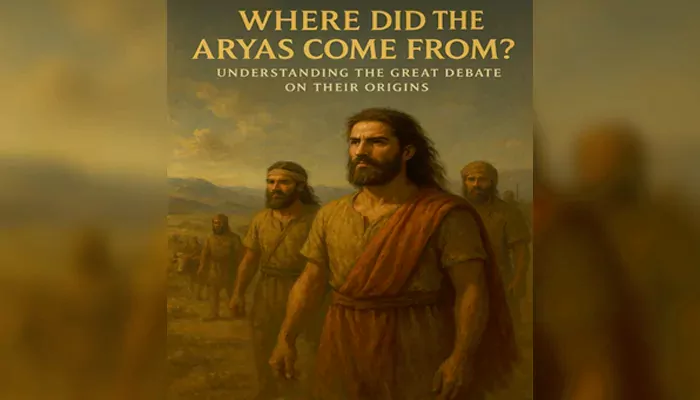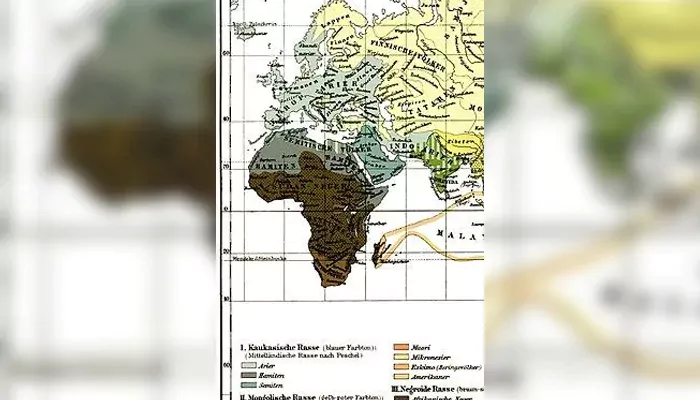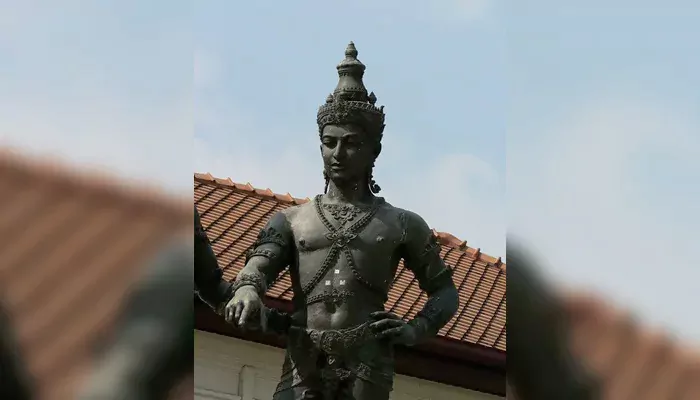
Let's trace the journey of the ancient Aryans and unravel one of our biggest historical mysteries.
We’ve all read about the Aryans in our history books, whose arrival shaped much of ancient India. And for many, they’re part of our origin story. However, the thing is that while we know they were here thousands of years ago, the question of where they came from remains one of history’s most intriguing puzzles. Did they migrate from distant lands? Or were they always here, evolving with the land they called home? Well, over the years, historians, linguists, and archaeologists have put forward fascinating (and sometimes conflicting) theories on this.
So, in this story, we’ll take a journey through these theories, sift through the clues left behind, and try to make sense of the centuries-old question: Where did the Aryans really come from?
In the oldest Sanskrit and Avestan texts, ārya was a name people used for themselves as a marker of speech and shared ways of life rather than a fixed racial identity. In modern scholarship, “Aryan” is used cautiously to describe speakers of early Indo-Aryan, the Vedic branch of the Indo-European language family, kin, linguistically speaking, to Greek, Latin, Persian, and many of today’s European languages.
However, two confusions keep this debate volatile. First, a shared language does not automatically mean a shared homeland. Speech can travel through conquest, migration, or prestige, and it can be adopted by those with very different ancestry. Second, nineteenth-century racial theories turned “Aryan” into a political and pseudo-scientific category, muddying the scholarly waters. Hence, today’s historians set aside that framework, focusing instead on culture, contact, movement, and more.
Current hypotheses fall into three broad camps: the Indo-Aryan languages arrived from outside, carried by steppe pastoralists in the second millennium BCE; they developed indigenously from Harappan or earlier South Asian cultures; or they spread by other, slower routes, perhaps linked to ancient farming dispersals. To test any of these claims, researchers turn to the four main archives.
The Ṛgveda is our earliest witness to the world of the Aryas. It speaks of Gods like Agni and Indra, and of ritual fires, clan names, and rivers. Yet it is not a diary. Its verses were composed over generations, made into a collection that was later fixed and passed down orally with extraordinary precision.
Philologists like Michael Witzel have noted that its references (chariots with spoked wheels, domesticated horses, certain plants) fit best into a late Bronze Age setting, not the deep Neolithic. But it is a poetic record, not a straightforward chronicle. Rivers can shift course or drift into myth; an image of a horse might belong to an older poetic stock or a newer borrowing. The text can tell us what its composers knew, but not always when or where they knew it.
The originals Aryas were white with blonde hair. It says so in the Rig Veda.
— Prometheus (@CaribbeanRythms) October 28, 2024
Sorry jeet. https://t.co/dGFAyCvhFN pic.twitter.com/UA0vuGFAz6
(Credit: Prometheus)
Linguistic comparison places Sanskrit within the Indo-Iranian branch of the Indo-European tree, closely related to Old Persian (Avestan). The shared words for wheels, chariots, and pastoral life suggest that the Proto-Indo-Iranian speech community lived no earlier than the late Neolithic (after the wheel’s invention) and likely within reach of the steppe cultures that thrived in the third and second millennia BCE.
This does not, by itself, prove a sweeping invasion. Languages can move with traders, intermarriage, or elite dominance. Still, the linguistic evidence points to an origin zone north and west of South Asia, with Indo-Aryan speech entering the subcontinent in roughly the same period suggested by archaeological and genetic clues.
Archaeology gives us the ground beneath the words. The Indus or Harappan civilization flourished between about 3300 and 1300 BCE, its mature phase marked by carefully planned cities and far-reaching trade. After about 1900 BCE, that urban order gave way to regional cultures: the Cemetery H phase, Ochre-Coloured Pottery traditions, and later, Painted Grey Ware settlements.
Far to the north, the steppe was home to pastoralist cultures like the Sintashta and Andronovo, who mastered horse-drawn chariots and metalwork. Some of these traits (chariot burials, certain weapon styles) begin to appear in Central Asia and the fringes of the subcontinent during the second millennium BCE.

Yet there is no single “smoking gun” in the archaeological record: no clear sign of a violent replacement around 1500 BCE. Instead, the material record suggests a mosaic, with some continuities from Harappan ritual life alongside new elements from steppe-linked cultures.
Ancient DNA has added a new, if still patchy, layer to this puzzle. The first genome from a Harappan individual, excavated at Rakhigarhi, showed ancestry from ancient Iranian-related groups mixed with local hunter-gatherer lineages, and little trace of steppe ancestry. By contrast, later individuals from the Swat Valley, dating to the Late Bronze and Iron Ages, carried a significant component of ancestry linked to steppe pastoralists.
These steppe-related genetic signatures appear in northern South Asia after the decline of Harappan cities, roughly between 1900 and 1500 BCE, the same window in which Indo-Aryan speech could have arrived. Today, that ancestry is most visible in some North Indian groups, particularly in certain Y-chromosome lineages, though its distribution varies widely.

Genetics, however, cannot tell us what language these people spoke, but the timing and pattern fit well with the linguistic and archaeological evidence for movement from the steppe into South Asia.
Alternative theories also remain. Colin Renfrew’s Anatolian hypothesis places the spread of Indo-European languages with early farmers millennia earlier, but it fits poorly with the Indo-Iranian linguistic timeline and recent genetic data. The “Out-of-India” model sees Vedic culture as a direct continuation of Harappan traditions, with influence spreading outward rather than in.
Now, the debate is charged because it touches identity. Colonial narratives once cast the “Aryan invasion” in racial terms; later national histories reshaped the story for their own ends. Genetics, with its talk of ancestry “components,” can be misread as confirming those older frames. Responsible scholarship insists on separating the prehistoric record from modern politics.
(Credit: TimelessTreasury)
Taken together, the evidence points to a complex sequence: a Harappan world descended from ancient Iranian and local forager ancestries, followed centuries later by an influx of steppe-related groups whose language and cultural practices helped shape early Vedic society.
It is not the tale of a single decisive march, but of gradual entanglement with movement, mixing, and adoption over generations. More data will refine the picture, such as more genomes from Harappan sites, tighter archaeological dating, and a clearer mapping of how steppe cultural traits took root in South Asia.
For now, the trail from verse to pot to gene leads outward to the steppe, then back into the plains, reminding us that the past is rarely one straight road, but a braid of many strands, still being patiently untangled.